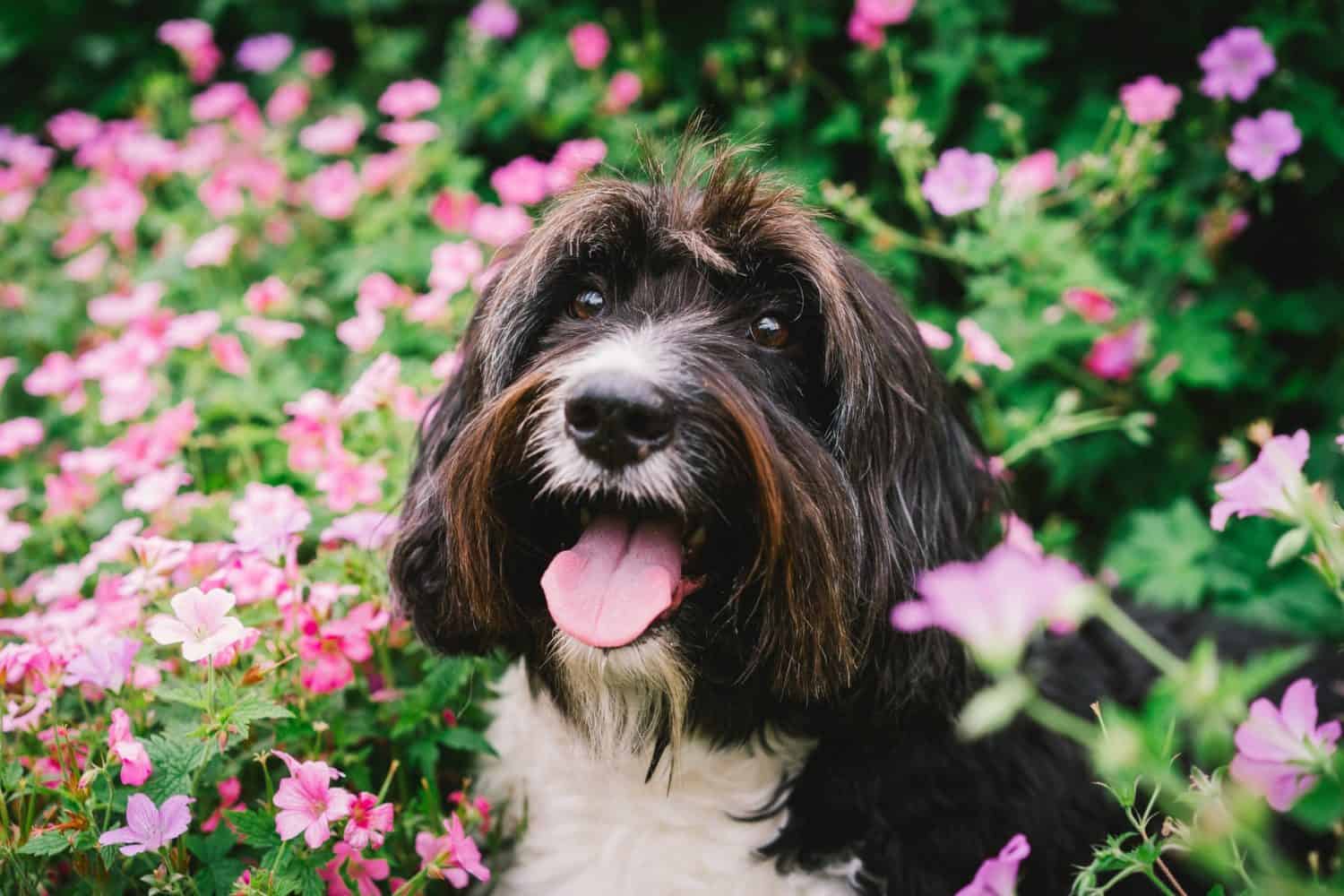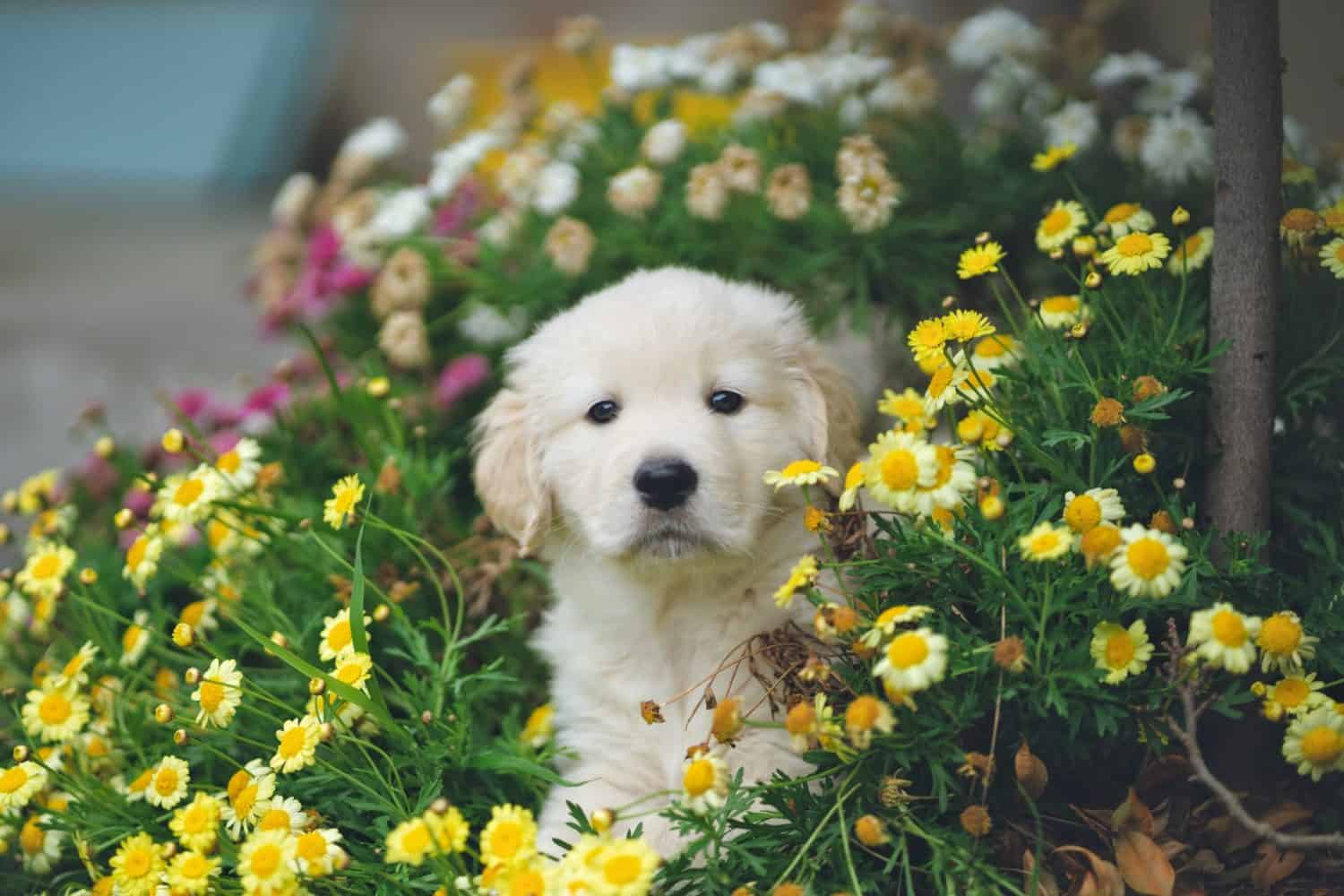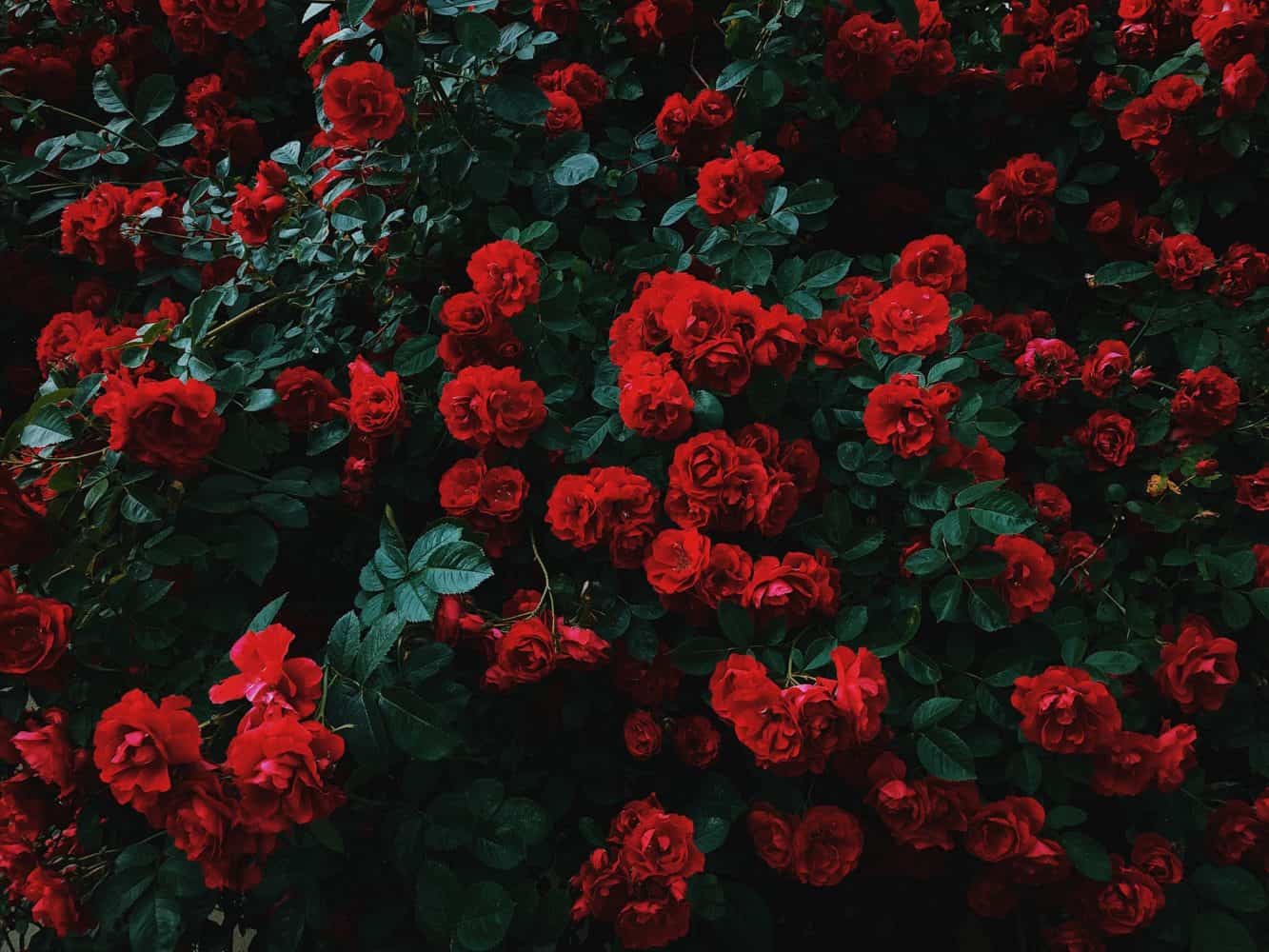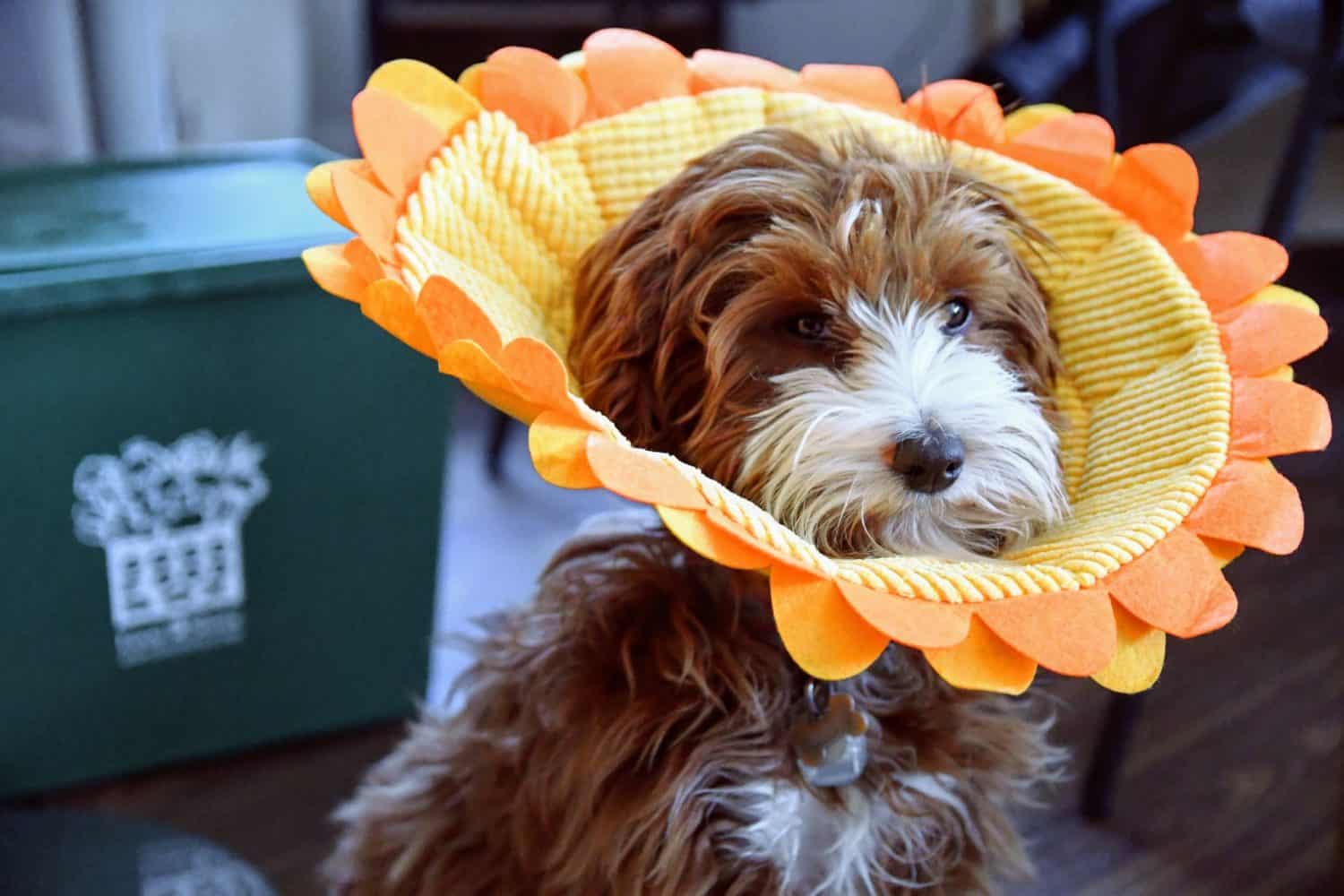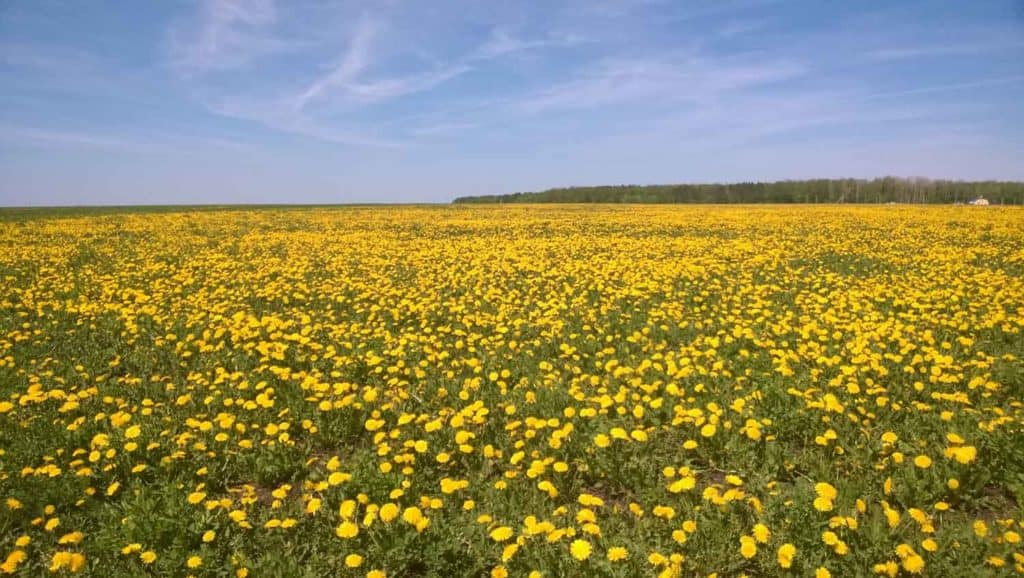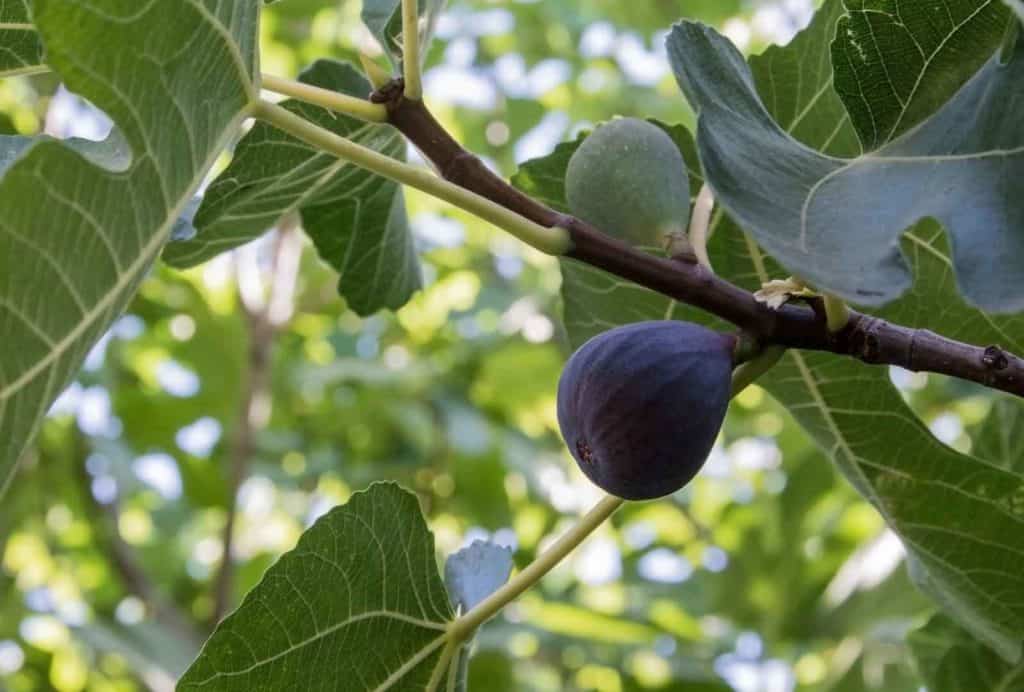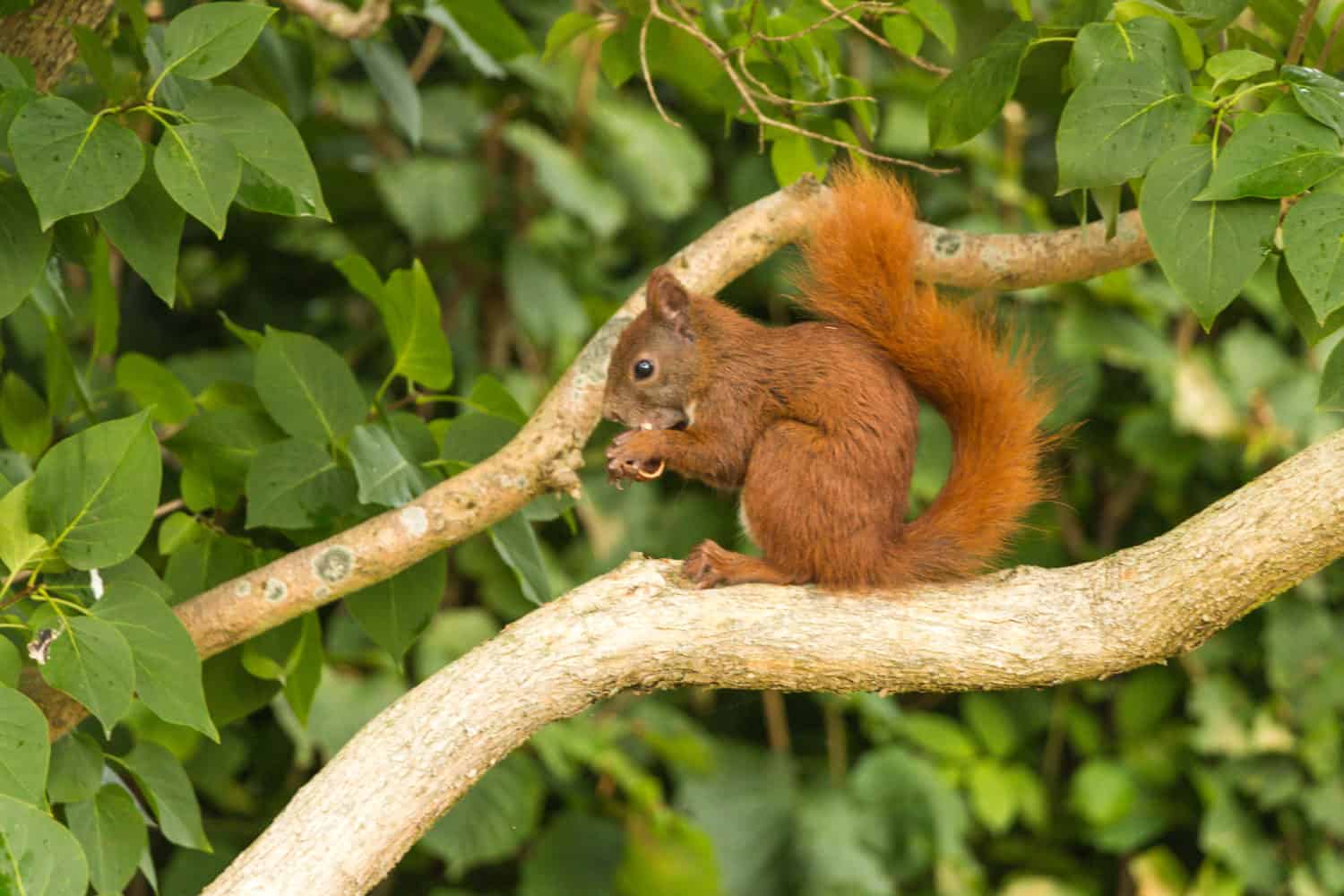Houseplants and flowers are a fantastic way to add a natural element to your decor. They are often the finishing touch on every room and act as a versatile decor element you can change as needed. If you have pets, however, those beautiful blooms can be deadly.
While some flowers are non-toxic to humans, they can cause great harm to our animal friends. Here’s everything you need to know about dogs and flowers and why you need to pay attention.
Contents
Why Some Flowers are Toxic to Animals
It’s common knowledge that some flowers are toxic. Poinsettias are a well-loved winter bloom that could cause harm to a human if ingested. However, there are many flowers that won’t affect humans but could kill a dog or cat if ingested. As a pet owner, you may be wondering why this is the case.
In simplest terms, human and canine bodies are vastly different. In addition to being smaller and more compact, canines lack the capacity to process many of the foods and plants that our bodies can. Their livers are particularly susceptible, as this organ plays a vital role in filtering and removing toxins from the body.
Common Toxic Indoor Flowers for Dogs
Unfortunately, most of the fan-favorite florals are on the “Do Not Eat” list for pets. Whether you buy a bouquet for yourself or receive one as a gift, it’s crucial to watch for these toxic flowers if you have a dog.
Lilies
While the degree of severity varies from species to species, all lilies are harmful to pets when consumed. The side effects range from mild irritation to kidney failure, liver failure, and death. As such, the best bet for dog owners is to avoid lillies entirely. It only takes a few petals to seriously harm your beloved canine companion.
While lilies are a common indoor plant, they’re also quite common in gardens. If you have lilies in your garden and a curious dog, consider digging them up and giving them away to someone who can safely enjoy them.
Read this guide if you want to know how often you should water your garden.
Birds of Paradise
Birds of Paradise are a gorgeous exotic flower that’s often the focal point of a tropical bouquet. These exquisite blooms come in bright colors and are named for their resemblance to birds sitting on a stem. Again, different versions of this flower have varying levels of toxicity. Some Birds of Paradise contain tannins in the bloom that dogs can’t process. Others have compounds in the leaves that cause severe reactions.
To play it safe, keep those beautiful tropical bouquets far away from your animal friends.
Aloe
While aloe rarely flowers, it’s a common gift plant that’s worth mentioning. This succulent has long been viewed as a miracle cure for skin issues, ranging from burns to wrinkles. Unfortunately, it has the opposite effect on dogs.
Aloe vera contains organic compounds that act as a natural laxative. While your precious pup might be ok if they have a nibble, too much can lead to excessive vomiting, dehydration, and death.
Non-Toxic Indoor Flowers for Dogs
Having a dog doesn’t mean that you can’t have beautiful plants in your home. Fortunately, there are plenty of indoor flowers that are non-toxic for dogs.
Roses
The classic rose is one of the best non-toxic flowers to display around your pets. If you’re giving a friend with dogs a gift, roses are a fantastic option. Fortunately, these lovely blooms come in a variety of colors, shapes, and sizes to offer a lot of variability without putting your pet at risk.
Sunflowers
Sunflowers are another pet-friendly option when choosing a floral display, either indoors or outside. Sunflowers look fantastic in both summer and fall harvest-themed bouquets, offering something bright, bold, and unconventional. You can display these proudly without worrying about what will happen if your pet gets too curious.
Orchids
Orchids tend to come as a potted plant option. These delicate petals are relatively low-maintenance, preferring a sunny window and minimal watering to thrive. These flowers are great for home offices, both due to their low-maintenance nature and their pet-friendliness. If your dog knocks over your orchid, you can rest assured that while this finicky floral won’t survive the entanglement, your dog will.
Signs of Poisoning in Dogs
Despite our best efforts, accidents happen. Even if you’re vigilant in preventing your dog from consuming toxic flowers in your home, the wider world is a dangerous place for pets. As such, it’s essential to know the signs of poisoning in dogs so that you can act quickly and get your pet the help it needs.
Some common signs of flower-related poisoning in dogs include:
- Lethargy
- Excessive drooling
- Vomiting
- Diarrhea
- Blood in stool
- Inability or unwillingness to eat
- Decreased fluid output
- Abnormal behavior
Again, the signs and severity will vary depending on your dog’s body type, what they consumed, and how much— this is why it’s important to pay attention.
What to Do if Your Dog Eats Your Flowers
If your dog eats flowers and you know they’re toxic, seek medical attention right away. Call your local animal hospital and tell them what type of flower they consumed, when they ate it, and any other details as asked.
If you know your dog consumed flowers but can’t identify them, follow the same steps as above. The vet may tell you to monitor your pet for signs of poisoning or ask that you come in for a check-up.
Finally, if you didn’t see your dog consume anything, they shouldn’t have, but notice the symptoms above, call for help immediately.
When you get to the animal hospital, they’ll likely run a blood panel and pump your dog’s stomach. They may receive an IV or additional support as their body processes the toxins.
Tips for Keeping Your Dog Safe
Being proactive is essential when trying to keep your dog safe. Choose non-toxic flowers, and keep all plants out of your animal’s reach. If you have a curious dog who loves to nibble on plants, ensure there are no toxic options in the vicinity for them to snack on.
Pay attention to your pet and call for help if you suspect they’ve consumed toxic plants.

